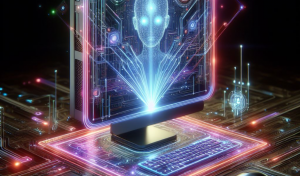Windows 8: A True Cloud-Ready OS?
![]() With Windows 8, the next big Microsoft desktop OS, will we see Windows become a true future-ready, cloud-based operating system? A recent Microsoft patent demonstrates how the OS can boot from the cloud. Called Fast Machine Booting Through Streaming Storage, the patent describes how storage devices with different primacies could boot the operating system through remote storage. If you have a laptop or tablet, you can boot the device remotely and start to work.
With Windows 8, the next big Microsoft desktop OS, will we see Windows become a true future-ready, cloud-based operating system? A recent Microsoft patent demonstrates how the OS can boot from the cloud. Called Fast Machine Booting Through Streaming Storage, the patent describes how storage devices with different primacies could boot the operating system through remote storage. If you have a laptop or tablet, you can boot the device remotely and start to work.
Microsoft is pushing cloud- and web-based software deployment on its Windows 8 OS. “Microsoft is changing the rhythm of its business,” Microsoft’s Chief Technology Officer of Worldwide Services, Norm Judah, said at Microsoft’s Tech.Ed in Auckland. “Think of applications as services as opposed to packaged software.”
And another event, the Microsoft BUILD conference in California next month, will showcase the development tools of Windows 8 together with its new capabilities. Before the conference, Microsoft is wooing developers away from webOS given HP’s receding gesture. Microsoft is courting webOS developers with free phones, tools & training. As part of the program, webOS developers are directed to Microsoft’s App Hub, and then offered tokens to download tools.
Microsoft’s App Hub follows the same footstep as Apple, offering apps from its own Mac App store. The inclusion of an app store in Windows 8 would leverage Microsoft’s developer community to offer varied cloud-based services, and would provide a platform for developers to take part in a growing ecosystem.
![]() All indicators predict that Windows 8 will be a huge change from Windows 7. And that could be the revitalization Microsoft needs in this arena. It’s Microsoft’s increasing ability to leverage its many sectors that can really give Windows 8 a push here. We see a few other services merging in Windows 8, including Microsoft’s Ribbon interface and Windows Phone 7’s Metro UI. Microsoft is pushing for the support of USB 3.0 interconnect in its upcoming Windows 8, a predecessor to USB 2.0 that can transfer data 10 times faster between computers and external storage devices. This is an important consideration for the growing demand around the personal cloud.
All indicators predict that Windows 8 will be a huge change from Windows 7. And that could be the revitalization Microsoft needs in this arena. It’s Microsoft’s increasing ability to leverage its many sectors that can really give Windows 8 a push here. We see a few other services merging in Windows 8, including Microsoft’s Ribbon interface and Windows Phone 7’s Metro UI. Microsoft is pushing for the support of USB 3.0 interconnect in its upcoming Windows 8, a predecessor to USB 2.0 that can transfer data 10 times faster between computers and external storage devices. This is an important consideration for the growing demand around the personal cloud.
“The growing support for USB 3.0 and wide usage of USB 2.0 was a compelling reason to improve the USB software stack,” said Dennis Flanagan, Microsoft’s director of program management for the devices and networking group, in the company’s Building Windows 8 (B8) blog. “By 2015, all new PCs are expected to offer USB 3.0 ports, and over 2 billion new ‘Super Speed’ USB devices will be sold in that year alone.”
Microsoft is also improving on the basic file management tasks, such as copy, move, rename and delete. According to the blog, Windows 8 will have one interface to manage all copy jobs instead of multiple windows, as currently present in Windows 7. The interface will provide a separate progress bar for copying dialog, with an option either to pause, resume a file copy progress or to delete and stop it. Updates like this take into consideration some of the file-management changes that a consumer will need, which is a major focus for Apple’s iOS update as well as the upcoming iCloud service.
The Building Windows 8 blog posted:
“We wanted to do an early Windows 8 post about one of the most used features, and one we have not improved substantially in a long time. With the increasing amount of local storage measured in terabytes, containing photos (in multiple formats and very large files), music, and video, these common operations are being taxed in new ways. These changes, along with consistent feedback about what we could improve, have inspired us to take a fresh look and redesign these operations.”
Windows 8 is expected to launch sometime in the second or third quarter of 2012. The OS will have a touch-centric interface for the mouse and keyboard, with support for PCs and tablets running on Windows 8 OS.
Through the recently acquired patent technology, Microsoft would be expanding its other computing device including tablets, PCs, smartphones to boot from the cloud or leverage more integrated systems that are driven by the cloud.
A message from John Furrier, co-founder of SiliconANGLE:
Your vote of support is important to us and it helps us keep the content FREE.
One click below supports our mission to provide free, deep, and relevant content.
Join our community on YouTube
Join the community that includes more than 15,000 #CubeAlumni experts, including Amazon.com CEO Andy Jassy, Dell Technologies founder and CEO Michael Dell, Intel CEO Pat Gelsinger, and many more luminaries and experts.
THANK YOU













